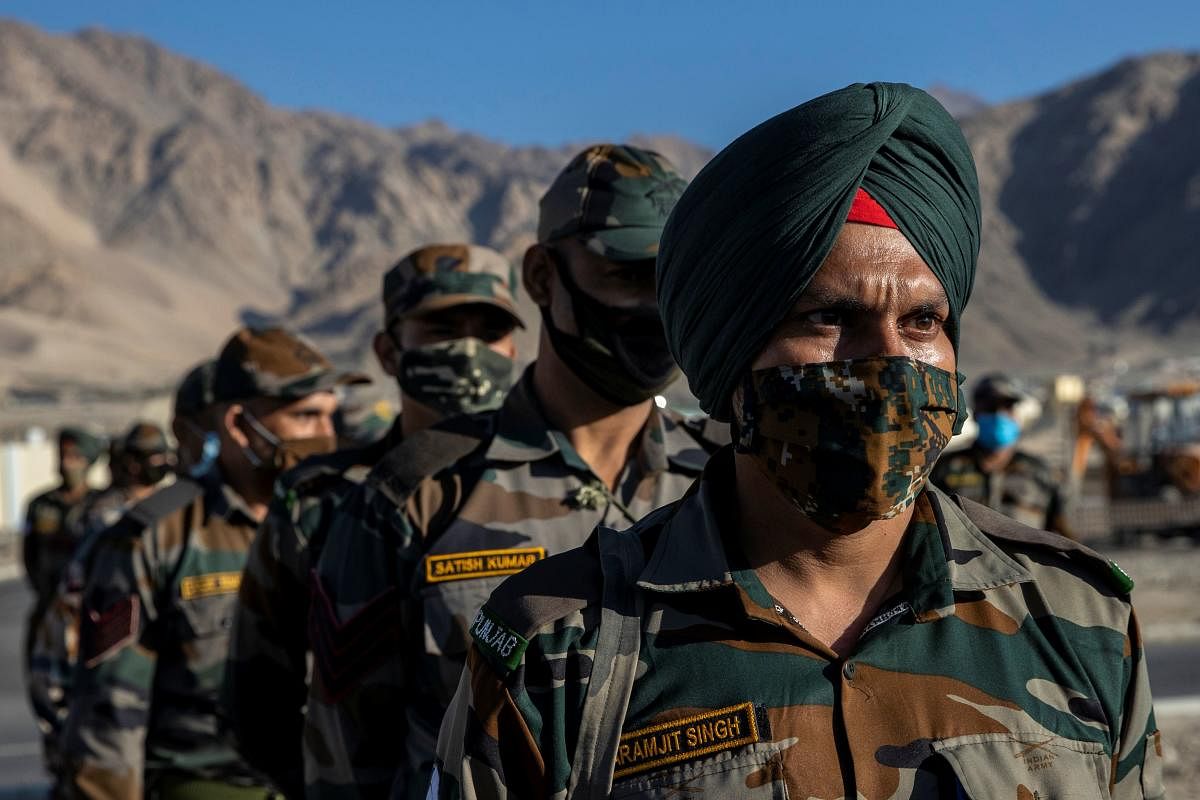
The military confrontation between India and China, both nuclear powers, seems to rest on the thin ice of political and diplomatic hope floating in muddied waters. The situation bears an uncanny resemblance to India’s military action, christened Operation Chequerboard, that followed the Sumdurong Chu incident in Arunachal Pradesh in 1987. The lesson for India from it was that a firm military stand paved the way for improving political relations that resulted in Rajiv Gandhi’s China visit in 1988, which in turn led to a thaw in Sino-Indian relations. Let alone a thaw, the situation has been progressively deteriorating over the past few months.
The present situation may differ in detail. But there is hope after the successful pre-emptive action by the Indian Army of occupying the Spanggur heights, and some other heights on the northern bank of Pangong Tso. The action confers a measure of tactical advantage, but more importantly conveys to China that India’s military will adopt a pro-active approach. This Indian reaction could provide diplomatic space for negotiations at the political level, unless China decides to escalate matters by aggressive military action.
Military escalation could take many forms and span the spectrum of confrontation and conflict, including a limited war. Confrontation is the technique that China has been exercising for more than a decade. It has a record of maritime confrontations with Japan, Vietnam, Philippines and Taiwan. Its present land confrontations are majorly with India and Bhutan. Confrontation is its means to coercion, heightening tensions and forcing a crisis to develop to indicate that the confrontation is at a critical transition stage. The possible resultant intense clash of interests could open the doors for the perilous threshold to be breached, leading to a conflict situation.
China is using the Ladakh confrontation as a tool of statecraft but has by now realised that its efforts at brinkmanship have run aground due to India’s latest military moves. China perhaps has three choices.
First, it could continue and prolong the confrontation through the winter and even over a couple of years and eat away India’s military and financial resources in defending its northern border. Its calculation could be that it would slow down India’s efforts directed at strengthening its maritime power. It could therefore continue its brinkmanship and apply force to signal its sensitivity to any of India’s moves that it perceives as being against its interests, especially in the context of China’s maritime confrontation with the United States. However, a prolonged confrontation may not be conducive to demonstrating China’s assertion that its strength is uncontestable.
Second, it could launch a limited offensive in Ladakh with the objective of signalling to the medium and smaller states that China’s military power cannot be contested and Asia is now China’s sphere of influence. This option could at best remain a threat as part of psychological pressure in a mind game. It would be extremely difficult to translate this option into fruitful action. Militarily, both sides have mobilised their troops, and the use of force will invite Indian resistance carrying inherent advantages that accrue to the defender in the high-altitude mountains. Moreover, even if limited success is achieved, Indian airpower, along with the onset of winter, will pose tremendous challenges for China by way of logistics sustenance.
Politically, India can be expected to intensify cooperation with the United States and other powers. This, in fact, is the very outcome that China is trying to avert.
Thirdly, China could find a face saver and return to the territorial status quo ante but after an assurance from India that it will not weigh in with any grouping or coalition that acts against China’s interests. Such demands will be made behind closed doors. Considering the devastating impact of Covid-19 on the Indian economy, this might seem tempting to New Delhi for short-term relief. It could be devastating in the long term, as it could pave the way and hasten the process for a China-dominated Asia.
This round of China’s aggressive political and military thrusts must evoke an Indian response that is willing to deal with brinkmanship and not being risk averse. Doklam, Wuhan and Mammalapuram only add to China’s continued perfidy and proclivity for mischief. This time, the stakes are too high, not only for India but also for the rest of Asia and many other countries that are being subjected to China’s coercion by different forms of power, rooted in its self-image of an economic and military giant that must be respected and obeyed. Its ability to impose psychological dominance is backed by an elaborate propaganda infrastructure.
For India, the outcome of the present situation should not merely be judged by a return to the territorial status quo and re-establishing sanctity of the border agreements. Instead, it should be judged by India’s adoption of an approach to dealing with China on the basis of coexistence.
If we adopt a policy of coexistence that is driven by benign indifference, the first priority ought to be to help ourselves while being cognisant of doing no harm to China. Competition within an international rules-based framework is acceptable, with dialogue as the platform to resolve differences. Confrontation in any sphere could incite an issue-based shift in Indian stance to deepen partnerships to promote sovereignty, stability, security and peace. The plain message to China has to be that coercion in any form is unacceptable and intolerable. One sincerely hopes that India’s political leadership is willing to take such a stand, for it could well determine the future of Asia in many ways.
(The writer is Director, Strategic Studies Programme, Takshashila Institution, Bengaluru, and former Military Adviser, National Security Council Secretariat)